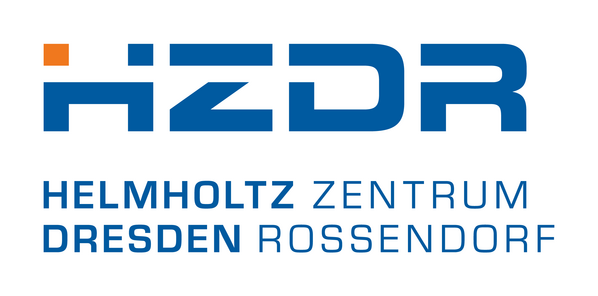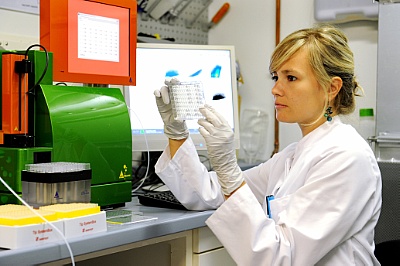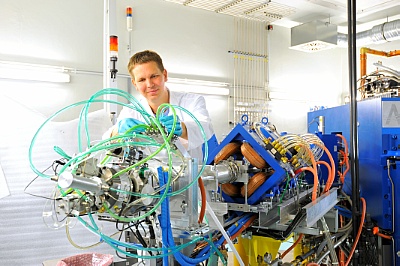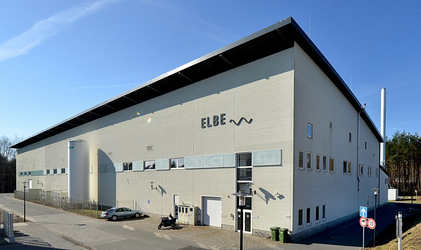
17/11/2022
IT management at Saxony's largest research centre
HELMHOLTZ-ZENTRUM DRESDEN-ROSSENDORF RELIES ON KIX SERVICE SOFTWARE
The Helmholtz Centre Dresden-Rossendorf (HZDR) is the largest research location in Saxony. Leading scientists work in eleven different institutes with a focus on energy, health and matter. To manage the branched IT, those in charge previously relied on software they developed themselves. But Corona at the latest showed that this has limitations. They found a future-proof solution in nearby Chemnitz.
On the 186-hectare site, around 1,400 scientists from various disciplines go about their work every day. The roots of the HZDR go back to the Central Institute for Nuclear Physics of the GDR, which was founded at the site in 1956. After reunification, the Rossendorf Research Centre was established here in 1992. In 2011, it became a member of the Helmholtz Association of German Research Centres, which ultimately gave rise to today's Helmholtz Centre Dresden-Rossendorf. In the various institutes, the staff are dedicated to cancer research, radiation physics and materials research, among other things.
The HZDR is also involved in various projects to combat the Corona pandemic. As early as spring 2020, for example, the CASUS institute (Center for Advanced Systems Understanding) provided the Folding@home project with free computing capacity to decipher the complex protein structures of the virus. Other scientists at the HZDR, on the other hand, are investigating transmission pathways in the air, for example, in order to develop more efficient air purification systems. But as the structures became more complex, it quickly became clear that the IT infrastructure no longer met the increased requirements.


Help comes from Chemnitz
For many years, the HZDR relied on a ticket system that the IT staff had developed themselves. But the IT colleagues always ran after the weak points of their system rather than sustainably remedying them. Important features, such as a full-text search, did not exist. The entire user interface was also not very intuitive, far too complicated and ultimately simply no longer up to date. Although it was still possible to work with it, the users became increasingly dissatisfied.

So Olaf Ruddigkeit, Head of User Services at the HZDR (photo), and his team set out to find a new IT service management system. The first thing they did was to draw up a specification sheet in which they summarised the most important requirements for the new system.
Because the HZDR is a public institution and the federal government stipulates that it should increasingly use open source solutions, all proprietary approaches were eliminated and four systems were shortlisted.
KIX fulfilled all the requirements from the specifications and even exceeded them in part
"Of course, the new system should have all the functions of a classic ticket system. But with KIX we can also map the different clients, distribute rights based on roles and freely configure dynamic fields without having to rely on the developer's help. That really made an impression on us.
But the financial advantages also played a role, of course: with other systems, billing is often based on the number of individual agents, but with the on-premise version of KIX, the number doesn't matter. Here, cape IT has really created a fair billing model.
Incident management, i.e. the actual ticket system, as well as facility management, orders for the laboratory and for research technology now all run via KIX. This also makes it easier to train the staff," says Olaf Ruddigkeit happily.
KIX as the heart of IT Service Management
The IT service management of the Helmholtz Centre Dresden-Rossendorf consists of four elements: Unified Endpoint Management, a central database, the Checkmk monitoring software and KIX - the heart of IT Service Management.
Unified Endpoint Management, also known as Desktop Central, takes care of the inventory and patch distribution for the system. All assets, users, user data and locations are stored in a database and subsequently managed in KIX. The monitoring software Checkmk also supplies KIX with information:
"All error messages arrive here in the management system, for example in the case of failed hardware," explains Olaf Ruddigkeit. About 40 employees are responsible for IT at the HZDR. They can already access around 50,000 assets in the database. They currently process about 14,000 tickets with KIX per year.


If HZDR employees want to create a new ticket, they can use the KIX Self Service Portal. Thanks to the division into different categories, faults can be assigned in a targeted manner. For example, users can also contact the local administrators in the institutes directly. If they cannot find a solution to the problem, the ticket ends up at the service desk of Olaf Ruddigkeit and his colleagues.
The Kanban board, which is also integrated into KIX, has proven to be particularly useful for daily work at the HZDR. This provides employees with a simple visual representation of the interim status of a particular project or whether it has already been completed. This has simplified processes in the laboratories in particular: because capacities are limited, employees here have to work according to deadlines. If there are postponements or a lab order is delayed, they are informed directly in KIX. Overlaps and duplicate work can thus be minimised.
Further planning of the HZDR with KIX for IT service management
At the moment, the HZDR uses KIX for fault management including area faults. Knowledge management, service contracts and service level agreements as well as change management and reporting also run via the ITSM system. The implementation of further functions is in the planning stage: "We are already working on setting up a device database. We also want to integrate the order management and administration tool into KIX in the future," says Olaf Ruddigkeit.
The long-term goal of Olaf Ruddigkeit and his colleagues is to map the entire IT service catalogue of the HZDR in KIX. According to him, the switch to the new system was a complete success and he even gets a little carried away:
"The overall package of KIX is hard to beat. Smart functions, useful optional extensions, intuitive operation, open source - this is exactly what a modern IT service management system must look like. In addition, the cooperation with cape IT was excellent. So we can look forward to the coming years calmly - at least with regard to our IT."